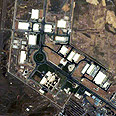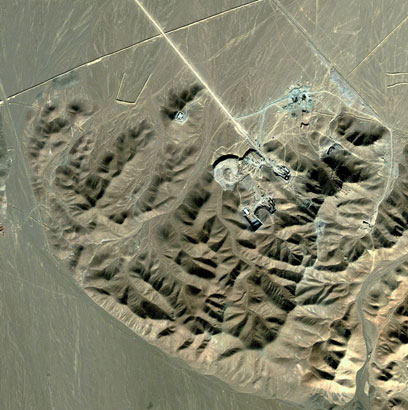
(Archives)
צילום: AP
NIE: Iran approaching immunity zone
US' National Intelligence Estimate report says Tehran rapidly approaching critical point after which its nuclear program will no longer be vulnerable to a military strike
As the debate over a possible strike against Iran's nuclear facilities grows, it seems that is possible that such a move would be ineffective.
According to a Friday report by Yedioth Ahronoth, top US officials, who are privy to the relevant intelligence shared by Israel and the United States, said that Tehran is rapidly approaching the "immunity zone" – the critical point in time after which the Islamic Republic's nuclear program will no longer be vulnerable to a military strike.
Related stories:
- Saudis: We'll intercept any IAF jets en route to Iran
- Israeli officials slam Obama's Iran 'red line' Op-ed: We'll pay heavy price for mistake in Iran
The National Intelligence Estimate (NIE) report, recently submitted to the White House, paints a bleak picture, as it indicates "a significant progress" in Iran's "arms group" – the people and facilities focused on the manufacturing of a nuclear warhead.
The NIE report said that Iran has recently installed 5,000 "twin centrifuges" in the underground nuclear facility in Fordo, near Qom.

The Fordo facility (Archives)
As far as Israel is concerned, introducing the centrifuges to Fordo has made the facility "immune," even if partially, against an Israeli strike, which is likely to find it difficult to ram through the fortified mountain-side facility.
According to the report, while the US and Israel may disagree on the timeframe of a possible attack, there are in complete agreement over the intelligence. "There is nothing that we know that you don’t know," a top American official said. "The opposite is true as well – your intelligence shares everything with us."
The NIE report, which is based on the most recent intelligence assessments of the situation vis-à-vis Iran, is considered one of the most top secret reports compiled for Washington.
Israeli sources said that both countries know that the "arms group" has renewed its activities in Parchin – a military base used for nuclear research and development, from which IAEA inspectors have been barred.
Recent satellite images show clear changes to the area's terrain, most likely in preparation for a time when Iran would no longer be able to prevent IAEA inspections.
- Receive Ynetnews updates directly to your desktop










